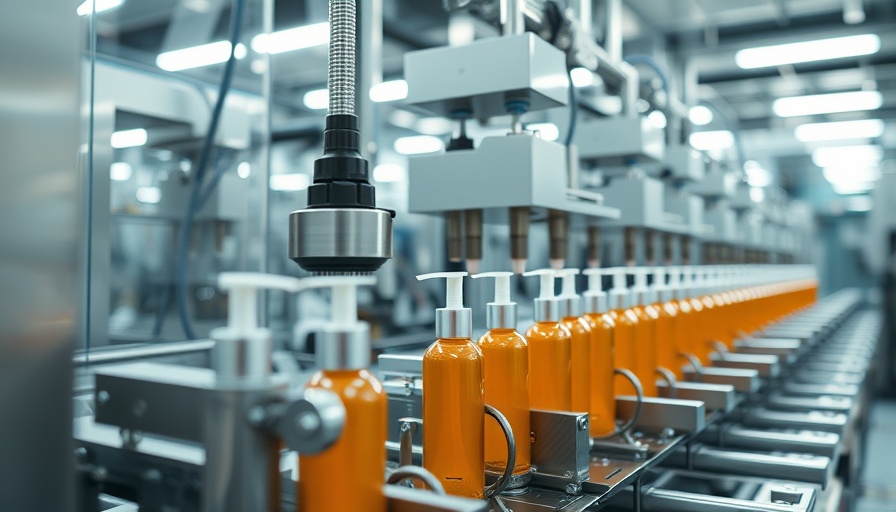
Unveiling the Beauty Factory of Tomorrow
With artificial intelligence (AI) making significant inroads into the beauty industry, the question emerges: What will beauty factories look like in the near future? As changes take hold, it is crucial for conscious consumers to understand how these advancements may affect what they find on store shelves.
The Current Revolution Shaping Beauty Manufacturing
AI isn't just a buzzword; it's reshaping how beauty products are created, integrated into the manufacturing process, and ultimately marketed. Forward-thinking companies like Cosmopak and Above Rinaldi Labs are already leveraging these technologies to enhance efficiency and innovation. According to Daniel Wolfe, SVP at Cosmopak, AI-powered optical systems are currently used in quality control, quickly analyzing visual data to assure that products meet high standards.
As we look towards the coming years, we can expect AI to expand its impact on the design process. Imagine a world where simply inputting conceptual ideas will allow machines to generate technical drawings and even provide cost estimates, drastically reducing development times and costs. This shift can potentially redefine how quickly beauty products reach consumers, especially in markets where manual labor is high in cost.
The Personalization Revolution: Beauty Tailored Just for You
For today's conscious consumers, the push for personalized beauty experiences is growing stronger. Fred Khoury, of Above Rinaldi Labs, predicts significant changes within just five years as technology facilitates customized production runs tailored to individual consumer needs. This level of personalization will help brands meet demand while keeping production efficient and compliant with ever-changing regulations.
This means that instead of a one-size-fits-all approach, your favorite beauty brands could begin offering products tailored specifically to you based on your unique preferences and skin characteristics.
Embracing Sustainability and Innovation
The drive for sustainability is leading to smart manufacturing practices, emphasizing the reduction of waste and improving resource allocation. AI-driven demand forecasting is at the forefront of this movement, allowing companies to minimize overproduction while enhancing their supply chains. By embracing these intelligent manufacturing methods, brands can focus on creating eco-friendly formulations while still meeting consumer demand.
Looking Ahead: New Workforce Dynamics in Beauty
The evolving landscape of beauty manufacturing will also require a new set of skills from the workforce. Scientists and engineers well-versed in data analytics and AI system optimization will become essential. Companies will strive for flexibility and agility by assembling cross-functional teams ready to adapt to quickly shifting market trends.
In a world that increasingly prioritizes ethical considerations and personalized experiences, the beauty industry is on the brink of a significant transformation. For the conscious consumer, this means not only new products but also the opportunity to engage with brands that value transparency and sustainability.
Join the Conversation about the Future of Beauty
As the beauty landscape shifts, now is the time for consumers to engage with their favorite brands on issues that matter—do you want more personalized options? What sustainable practices are most important to you? Don’t hesitate to share your thoughts and preferences; they shape the beauty factory of tomorrow!
 Add Row
Add Row  Add
Add 




Write A Comment